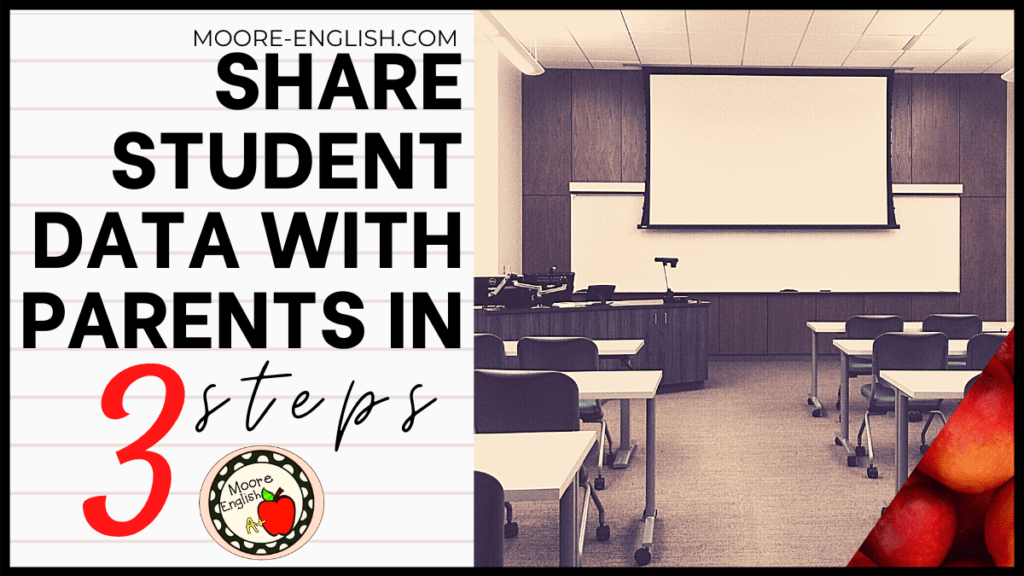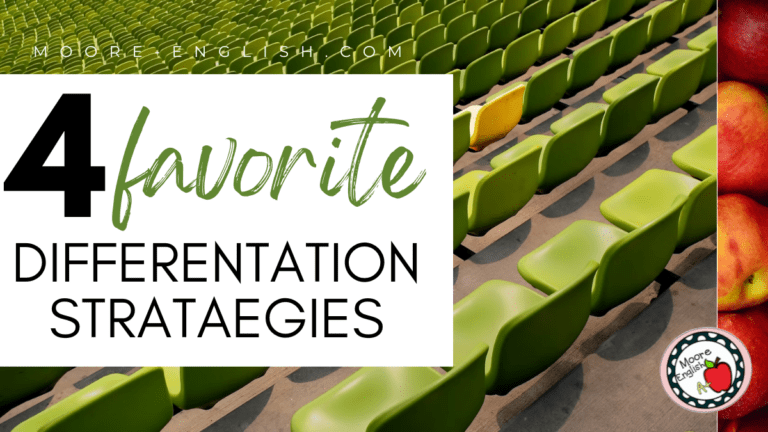For the past week, we’ve been focused on using student data professionally as a means of leading data-driven, student-centered conversations. As a conclusion to this series, let’s discuss how to effectively share student data with parents. These strategies provide a great structure or framework for conferencing with parents.
This post this post may contain affiliate links. Please read the Terms of Use.
Reasons for Sharing Student Data
Visualize
Just as it is important to help students visualize meaning, it is also important to help parents visualize student growth. For this reason, I really value my classroom data wall. Seeing our classroom charts and graphs, which track class averages, helps parents understand where their student falls in the classroom. This can be important when helping parents visualize struggles or when confirming student skill mastery.
Another way I help parents visualize their student’s personal growth is through student data sheets. Even at the high school level, data sheets can be powerful tools for students. During conferences, I often show parents their student’s data sheet, which focuses on writing and grammar growth. This helps parents see where their student needs additional support and where their student truly succeeds. Additionally, parents often see trends I do not see: a dip the week of a family vacation or a spike during an elder sibling’s visit home. These kinds of insights can be invaluable going forward during the year.
Emphasize growth
In addition to helping parents visualize their student’s data, it is also important to help parents see their student’s growth. This is where individual data sheets are especially important: data sheets show where students began and where they are now. Additionally, looking at formative assessment can be a good way of helping parents recognize student growth. Sometimes, I also bring student-made goal sheets so parents can read through their student’s self-selected goals. This helps parents align their priorities with their student’s priorities, and this activity can cast the rest of the discussion in a whole new light because it puts the student at the center of the discussion and lets the student’s desires drive the conversation.
Choose data carefully
In my classes, the grade book usually has around 1000 points a semester, so I can offer parents a lot of data: pre-test scores, writing rubrics, benchmark assessments, etc. While each of these items is an important indicator of student performance, sharing too much information can be overwhelming for parents and can be too much for a brief parent-teacher conferences. For this reason, I suggest selecting data carefully. While I’d never advocate for hiding or intentionally withholding information from parents, I am suggesting that during a parent-teacher conference, not every piece of data needs to make an appearance.
Choosing Data to Share
So how do teachers determine which pieces of data to share? Choose three pieces of data to bring to a parent meeting: a celebration, a growth opportunity, and a student-selected brag.
1. A celebration.
To start any parent interaction off on the right foot, share data that celebrates student success. This can be a spike in the data binder, a powerful rubric, or a compelling benchmark assessment. Regardless of which data point you choose, celebrate student success with parents. If possible, give parents something tangible they can take home and put on the refrigerator.
2. A growth opportunity.
Next, bring a piece of data that represents an opportunity for student growth. This is probably the document(s) that inspired a parent-teacher conference in the first place: a series of concerning formative assessments, a low-scoring diagnostic, a rough rough draft. I prefer to bring this item out second because you can point to the celebration piece and say, “I know your student is capable of great things–just look at this first item–but this second item does not match that same level of mastery.” After introducing the growth opportunity, teachers can answer parent questions about the data–how was it collected? Under what circumstances? With what preparation? Then, teachers can ask parents “How can I help your student improve in this area?” This is usually a revealing question and can help parents and teachers design the best means of helping the student achieve success.
3. A student-selected brag.
After developing a plan of action, I like to end by sharing student-selected data: a promising test score, a reflective journal, a recently-met goal. This activity provides students with an opportunity to show off a little, which creates an empowering opportunity for students. Additionally, giving parents another tangible item can be a good place to end our discussion before standing up and shaking hands.











